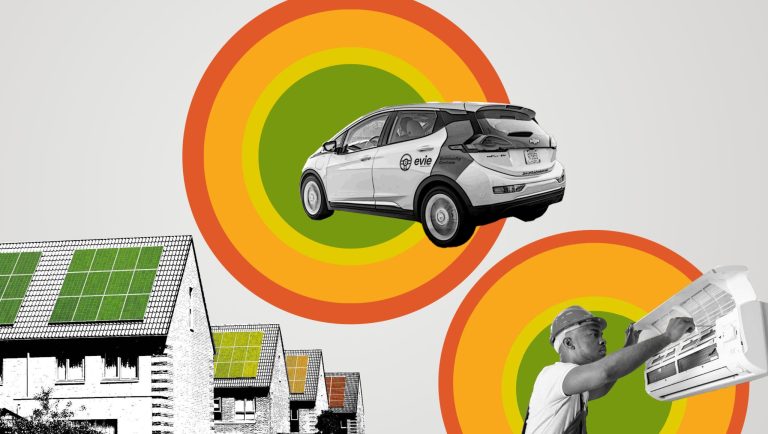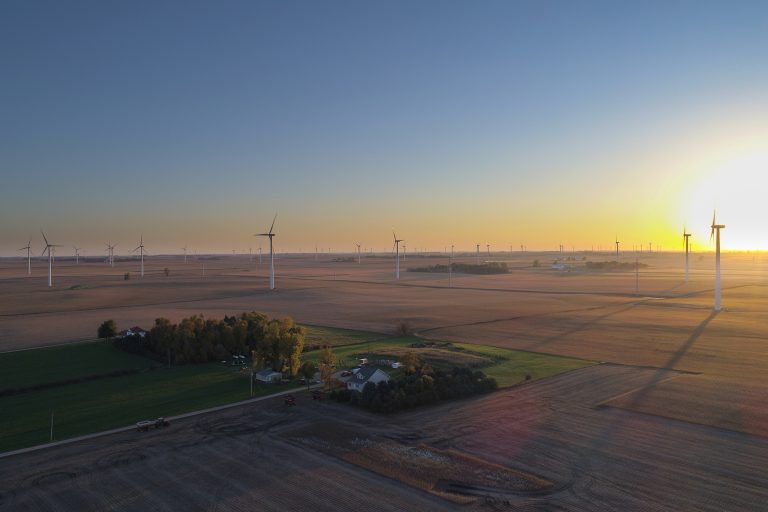
The following blog post originally appeared at Stanford Social Innovation Review. It is reprinted here with permission in its entirety.
A four-point framework for funders to advance a low-carbon future using their entire endowment.
Anticipation is building as world leaders converge at the international climate conference in Paris to address global warming. This will be a historic summit, and we’re heartened to see it going forward as planned, as one more show of resilience in the City of Light.
The magnitude of the climate crisis facing our planet, however, requires that leaders at every level and in every sector—not just those attending the summit—take bold and creative action.
Philanthropists, in particular, can address the challenge by mobilizing their endowments in new ways. The social sector is sitting on trillions of dollars in endowment funds, and every endowment offers immediate and powerful opportunities to advance a low-carbon future.
We are pursuing some of these new opportunities at The McKnight Foundation, a private family foundation that grants more than $85 million a year in our home state of Minnesota and around the world. We have long supported grantees working to build and strengthen socially, economically, and environmentally sustainable communities. But given the urgency of climate change and an organizational mandate to optimize all our resources for social impact, we decided we had to do do more.
The social sector is sitting on trillions of dollars in endowment funds, and every endowment offers immediate and powerful opportunities to advance a low-carbon future.
In 2013, our board established a flexible impact investing program with $200 million, or 10 percent of our $2 billion endowment. Our program utilizes direct investment, funds, and debt to provide financial returns, coupled with environmental or social returns. Impact investing must also provide learning returns to the foundation, whereby program staff gain new market-oriented information and perspectives. But as we began asking how we might better leverage the other 90 percent, we discovered even greater opportunities for impact. We have since developed a responsible investing framework that applies across our entire portfolio.
Our approach is organized around four points of leverage: our role as a customer of financial services, as a shareholder, as a market participant, and as an owner of assets. It provides a practical framework that we can scale up or down depending on financial and human resources, and it can assist experienced impact investors in flexing the muscle of their entire endowment. In fact, we believe our four-point framework can help any investor build a truly resilient economy.
Our Role as Customer of Financial Services
As a customer of financial products and services, we can promote integrated thinking on overlooked, yet material, market considerations. For our investment committee, that means broadly and deliberately thinking about environmental, social, and corporate governance (ESG) issues.
Prior to articulating the four-point framework, we were aware of social and environmental risks and opportunities, but lacked formal systems for acting on that understanding. Now, McKnight’s investment committee asks all fund managers about their ESG process and capabilities. This simple act of posing questions has led to a deeper understanding of our managers and their ESG approaches, and can prompt change. In an annual due diligence meeting, for example, one of our hedge fund managers had nothing to say about ESG. A year later, that same manager is looking to discuss the fund’s evolving ESG strategy with us.
In another example, we conducted a portfolio analysis in early 2014 that identified a Russell 3000 tracker fund as our most carbon-intensive holding. Our investment committee wanted our fund—representing $70 million—to continue to serve the same low-risk, low-cost function in our portfolio that it always had, while reducing McKnight’s exposure to climate risk. We approached Mellon Capital Management about reducing our exposure to inefficient producers and exclude coal, and in response, Mellon developed an entirely new product.
Later that year, we seeded the Carbon Efficiency Strategy fund with $100 million. At its one-year anniversary, this 1,000-company fund has outperformed its benchmark, with a 53 percent lower carbon intensity (greenhouse gas emissions per dollar of sales). The process created new ESG capacity within Mellon and launched a new product that is garnering substantial institutional investor interest: a win-win for customer and fund manager. This is how investors have the power to build new markets.
Our Role as Shareholder
Our $900-million-plus public equities portfolio makes The McKnight Foundation a shareholder of corporations, with the ability to vote company proxies and raise questions about ESG practices, strategy, and risk management.
In practice, we vote all proxies in separately managed accounts, recognizing the materiality of climate change. We also seek to improve what we own.
To that end, in April 2015, we sent a simple letter to 170 companies in greenhouse-gas-intensive industries that were not reporting emissions to let them know that the Carbon Efficiency Strategy was therefore using estimated data—and that’s not good enough. We heard back from 10 companies, including one that agreed to begin reporting more accurate figures. A small step, but a step forward nonetheless.
Our Role as Market Participant
As an investor, we have skin in the game with policymakers and financial regulators, and we can join with other institutional investors to encourage greater transparency.
Since articulating our four-point framework, we’ve collaborated with dozens of institutional investors representing trillions of dollars through the Investor Network on Climate Risk. Together, we’ve asked the US Securities and Exchange Commission to require better corporate reporting on material climate risks. We’ve also notified G-7 leaders that investors need greater certainty in carbon pricing to make good decisions. We encourage other investors to do the same. This is how coalitions of like-minded investors can build market infrastructure.
Our Role as Owner of Assets
As fiduciaries, we have begun to direct our dollars to investment opportunities that align more closely with our mission. Half of McKnight’s $200 million impact allocation has market-rate expectations for return; $50 million has a higher risk tolerance with a six percent return horizon; and $50 million is in traditional low-return program related investments. To date we’ve deployed $45 million above and beyond what is now $105 million in the Carbon Efficiency Strategy.
Using investments to stimulate a clean energy economy requires strategy and resources. For us, that meant hiring a director of impact investing and a specialty consultant, Imprint Capital, to build the program. In all cases where we will accept less than our targeted foundation return, we seek prudent investments with higher social and environmental impacts, a strategy that a Treasury Department opinion recently affirmed. In all cases, our impact investments must also return learning to our program officers.
Only time will tell if we achieve the financial and social returns we seek. The learning returns, however, have been immediate. And after 18 months in the trenches, we’ve seen the potency and purposefulness of pulling these market levers. To accelerate progress toward climate solutions, more investors must recognize and wield the power they already possess in abundance.


